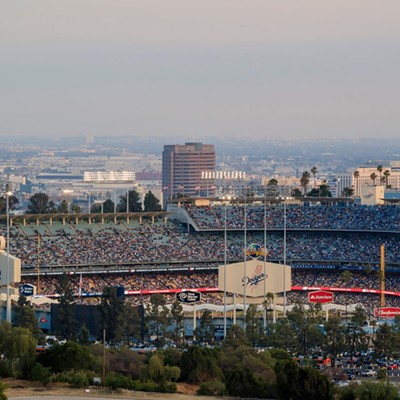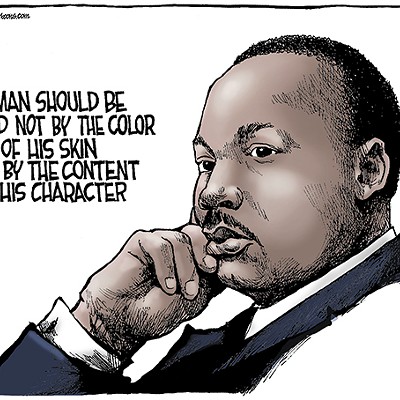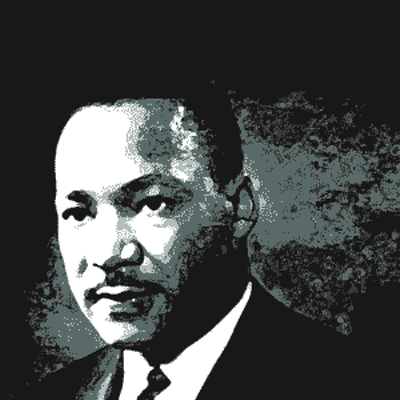A few weeks ago, I wrote about Philo Farnsworth, the Utah man who invented television back in the 1920s when he was just 21. I mentioned that there is a statue of Farnsworth in the U.S. Capitol, which is a great honor seeing as how each state is allowed two statues and Utah's other one is of Brigham Young. (I'll give you until the end of this column to try to guess which two Arizonans are immortalized in the National Statuary Hall. Don't look it up! One of the choices is pretty cool and you can see the logic in it. The other is definitely a "Who's that?" for most Arizonans.)
In my unending quest to cram into my head knowledge that nobody else really gives a crap about, I decided to read about every single statue/person.
At the present time, there are no African-Americans in the Hall. No Martin Luther King Jr., no Frederick Douglass. The Maryland Legislature considered putting up a statue of Underground Railroad operator Harriet Tubman, but it asked Congress if it could have special permission to put up three, because legislators didn't want to remove either of the original two. (They are of John Hanson, the first president of the Continental Congress, and Charles Carroll, the only Catholic to sign the Declaration of Independence. Carroll, who died at age 95 in 1832, was also the longest-living and last-surviving Declaration signatory.)
It should be noted that some of the state statues are of native sons who became better known elsewhere. Given that, I thought that Arizona might someday consider Cesar Chavez, who was born in Yuma, for such an honor. However, since the idea has to originate in a state's legislature, the thought of Arizona recognizing a Latino union man might be taken up about three weeks after Never.
Indiana honors Lew Wallace, a Union general in the Civil War who is best known for what he did later in life in New Mexico. While serving as Territorial governor of New Mexico (and Arizona), Wallace broke up the Lincoln County War, made a deal with Billy the Kid and, in his spare time wrote Ben-Hur: A Tale of the Christ. The book was the best-selling American novel of the 19th century, surpassing even The Adventures of Huckleberry Finn and Uncle Tom's Cabin.
Some statues are really cool. Kentucky honors Ephraim McDowell, the first doctor to remove an ovarian tumor. Hawaii's are of Father Damien, who ran the leper colony on Molokai, and King Kamehameha I. Indiana honors Oliver Hazard Perry Throck Morton (not Throckmorton), the state's governor during the Civil War and a staunch supporter of Abraham Lincoln.
Others are not so cool. Mississippi is represented by the president of the Confederacy, Jefferson Davis, and Confederate Col. James Z. George. And Georgia has Alexander Stephens, vice president of the Confederacy. Several other Southern states are represented by at least one person who took an active part in the bloodiest war in U.S. history, the one fought over the desire to retain the "right" to own other human beings.
Perhaps my least favorite statue is of Alabama's Joseph Wheeler, a Confederate general who later served in Congress. He was in his 60s when the Spanish-American War broke out, but he went back into the military. During the Battle of Las Guasimas de Sevilla in Cuba, the apparently addled Wheeler shouted to his troops, "Let's go, boys! We've got the damn Yankees on the run again!"
I visited the Capitol a few years ago and looked at some of the statues. I was hoping that neither of Arizona's would be of the racist Carl Hayden. When I was a kid, I would watch Lyndon Johnson on TV giving speeches in front of Congress and I would notice, over LBJ's shoulder, this super-old guy. I asked my mom who it was and she told me to Google it (in a 1960s kinda way). I found out that Carl Hayden had been in Congress ever since Arizona became a state, which was mind-boggling. He fought for the Central Arizona Project but when it came to the important stuff, like civil rights, he always sided with the Southern racists. It probably wasn't surprising when Arizona was lumped together with the Southern states as places that needed federal oversight under the Voting Rights Act.
Anyway, neither statue was of Hayden. One of the two statues is of Padre Kino. He was pre-Italian (born in what later became part of Italy), which means he doesn't count as a minority, except to the extremely small-minded. The other is of John Campbell Greenway, who, just by coincidence, was the great-great grandson of a fellow statue-ee, the aforementioned Ephraim McDowell. A mining and railroad executive, Greenway is best known for developing the New Cornelia Mine near modern-day Ajo into the first open-pit copper mine in Arizona. He also established the town of Ajo, which has for its motto, "At Least We're Not Yuma."
Greenway's statue is due to be replaced by one of Barry Goldwater. (Greenway's will be placed in the state Capitol. One of the really cool things about Greenway's statue is that it was done by Gutzon Borglum, who would later go on to create the Mount Rushmore sculptures.) So Arizona will be represented in the National Statuary Hall by one guy whose life was dominated by religion and another who voted against the Civil Rights Act of 1964. Yeah, that sounds about right.









